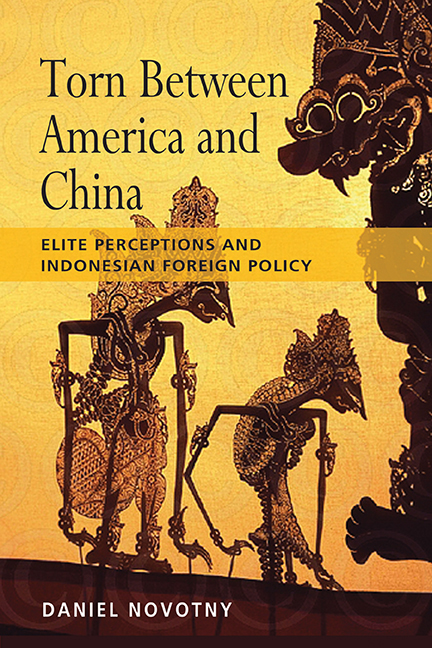Book contents
- Frontmatter
- Dedication
- Contents
- Foreword
- Preface
- List of Figures
- Acknowledgements
- PART I THE CONTEXT
- 1 Introduction
- 2 The Power of Perceptions
- 3 The Foreign Policy Elite and Indonesia's National Interest
- PART II THE PERCEPTIONS “ANTARA DUA KARANG”
- PART III ELITE CONSENSUS AND POLICY OUTCOMES
- Glossary
- Abbreviations
- Bibliography
- Index
- Note on the Author
1 - Introduction
from PART I - THE CONTEXT
Published online by Cambridge University Press: 21 October 2015
- Frontmatter
- Dedication
- Contents
- Foreword
- Preface
- List of Figures
- Acknowledgements
- PART I THE CONTEXT
- 1 Introduction
- 2 The Power of Perceptions
- 3 The Foreign Policy Elite and Indonesia's National Interest
- PART II THE PERCEPTIONS “ANTARA DUA KARANG”
- PART III ELITE CONSENSUS AND POLICY OUTCOMES
- Glossary
- Abbreviations
- Bibliography
- Index
- Note on the Author
Summary
INTRODUCTION
Post-Cold War international relations have been marked by far-reaching shifts in the balance of power with the perhaps most widely known example being the challenge rising China poses to the predominance of the United States. It has been increasingly apparent that many smaller states are forced to respond to this trend by carefully manoeuvring between these two major powers. A case in point is Southeast Asian states’ growing difficulty in effectively managing their relationship with the incumbent and the rising superpower. To this end, there has been much debate about the present dynamics and possible future direction of Indonesia's foreign policy — of particular interest is Indonesia's approach to its relations with the United States and China. From the perspective of many Indonesians and other Southeast Asians, both at the elite level and public at large, this relationship can be viewed in a triangular form. Here, referring to this “triangular” relationship, Dewi Fortuna Anwar has aptly expressed the question that many people nowadays ask in the title of her authoritative article, “Indonesia's Foreign Relations: Going West or East?”.
How can a developing, democratic and the world's most populous Muslim country like Indonesia manage its foreign relations, while facing a myriad of security concerns (which are often multi-layered and multi-sourced in nature) and dilemmas in the increasingly complex situation of the post- Cold War international politics, without compromising its national interests and sacrificing its independence? Approaching this problem from the vantage point of the Indonesian elite, this study explores the influence of (and the complex interactions between) Indonesian foreign policy elite's threat perceptions on the decision-making process behind the country's foreign policy. To illustrate the ways in which contemporary Indonesian leaders’ perceptions, with a special emphasis on the United States and China, have affected the country's participation in the post-Cold War international affairs, this book presents a graphic picture of what members of the Indonesian elite see when they view the outside world and Indonesia's dilemmatic position within the “tricky” and “perilous” international system, while systematically seeking out the sources of the leaders’ perceptions.
- Type
- Chapter
- Information
- Torn between America and ChinaElite Perceptions and Indonesian Foreign Policy, pp. 3 - 15Publisher: ISEAS–Yusof Ishak InstitutePrint publication year: 2010

